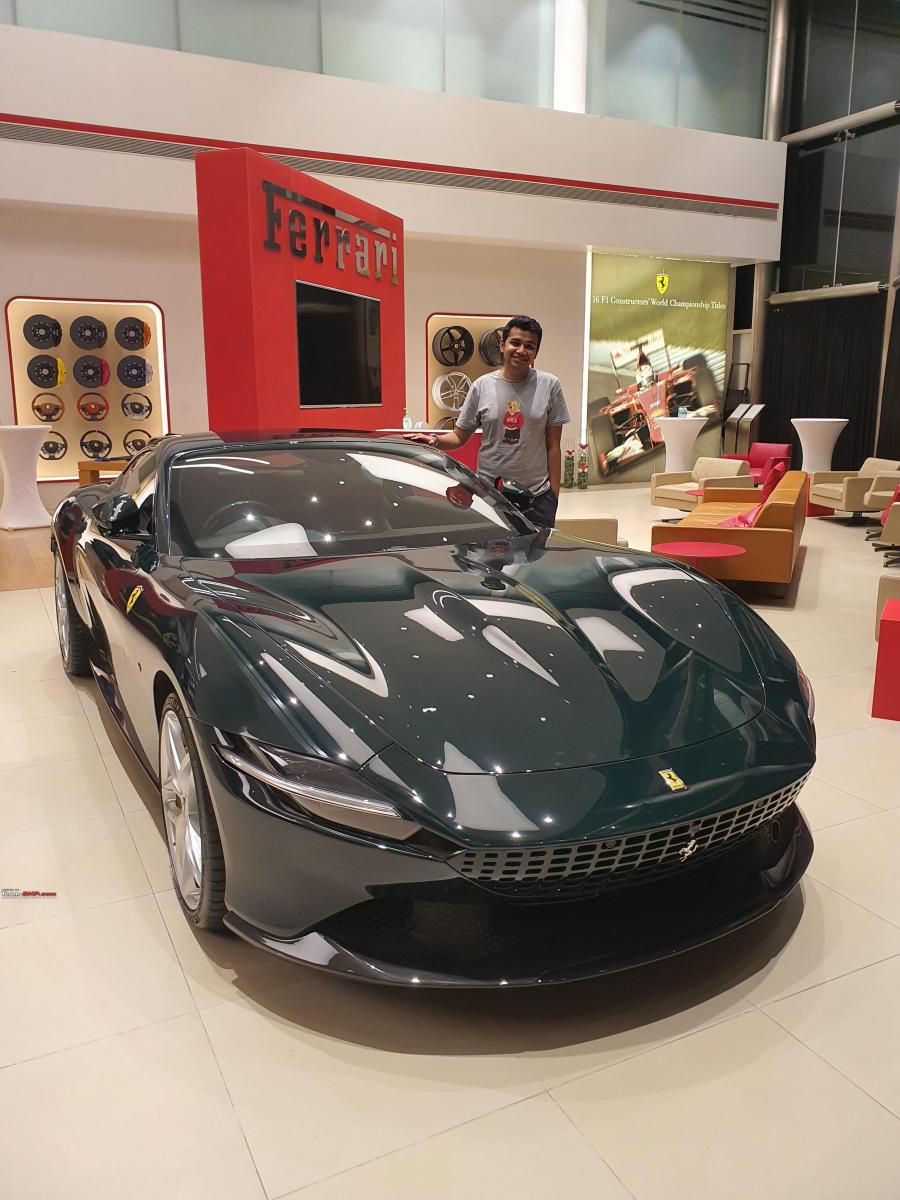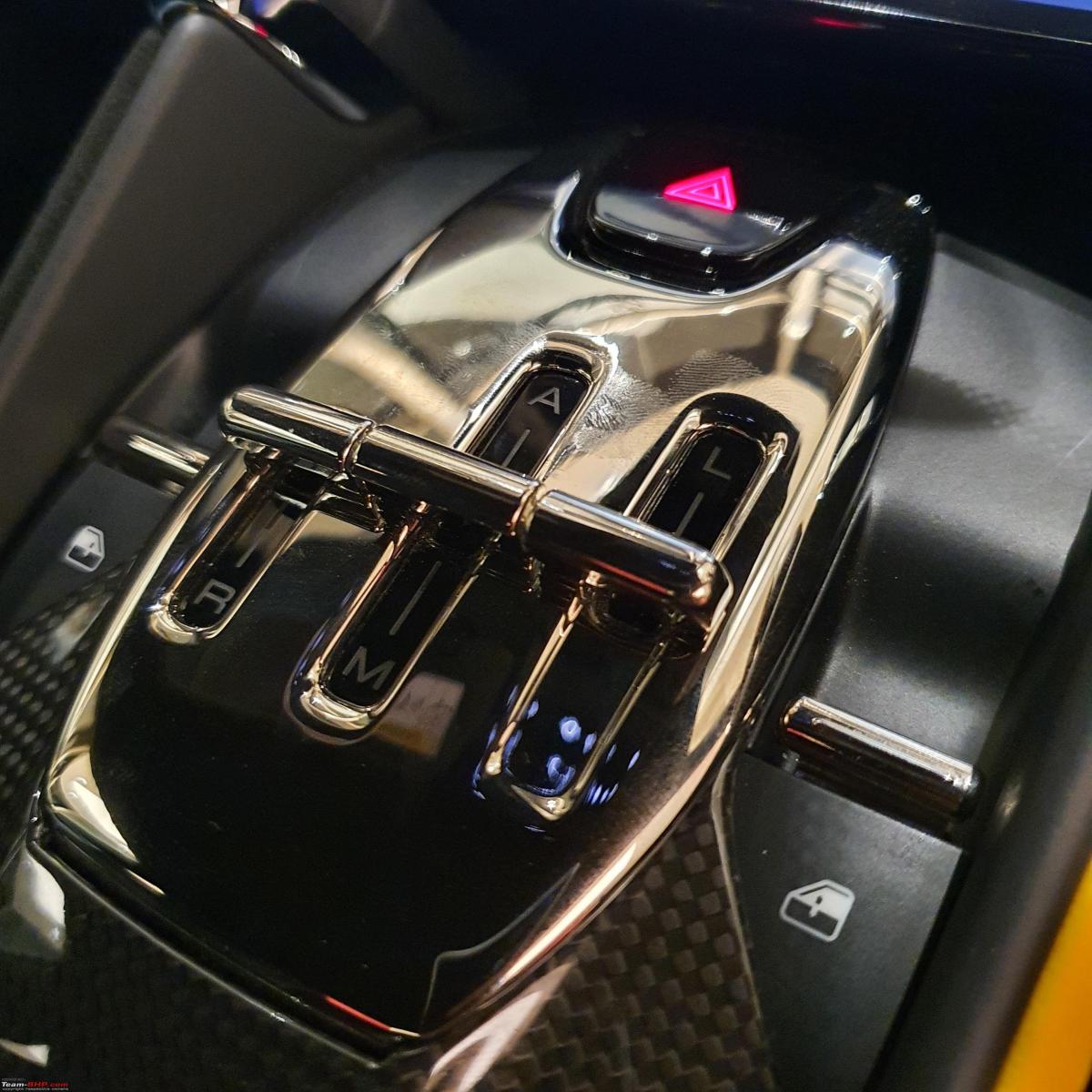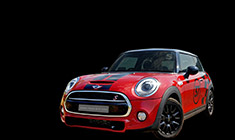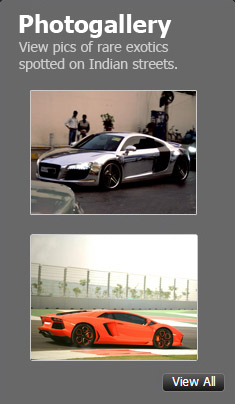News
A Study in Verde | The Ferrari Roma
The Ferrari Roma gives credence to the fact that older cars or retro designs are the way to go.
BHPian hey.rudey recently shared this with other enthusiasts.
Short disclaimer: This is neither a comprehensive review as found across the forum, nor an advertisement of any kind, but rather a collection of my own thoughts on what I have experienced and felt. Please do drop in a few tips and suggestions to make my content enjoyable for everyone and to help it remain within the forum guidelines.
Roma. Spell it backwards, it is “Amor”; the Spanish and Portuguese word for love. And I am in LOVE with Roma’s design! In today’s forum post I want to discuss the design of the Ferrari Roma. Some find it controversial, comparing it to an Aston Martin; but the car is distinctly Italian. Its design language is an esoteric taste, tipping its hat to many past fast Ferraris. Usually, writers like to summarise and justify their findings towards the end. I am doing the opposite by putting this across in the beginning: The Ferrari Roma is the most beautiful GT car in the world and I would take it over a Pista.

Me beside the Roma
Chapter 1: La Dolce Vita
To understand the “La Nuova Dolce Vita” design ideology, we need to understand “La Dolce Vita” or “a life of heedless luxury and pleasure”; a period of time from the 50s to 60s. This is a period when the Italian way of living, design, fashion, food and of course cars, rose to prominence.
Italian goods back in the 50s were a praxis of high quality, low-cost products. The textile industry flourished after the Second World War, and trade with the United States was on the rise. Italian textile merchants used this opportunity to mass-produce their products by setting up factories and penetrate the American market. Italian Design Houses soon followed suit with various fashion shows oozing with fitted suits, svelte dresses, sensual leather goods, and elegant jewellery.

Roma's Brochure
Cars were design marvels and icons in the making. There was a car brand for everyone.
Need a family car? Obviously, it's a Fiat.
Want a sportier Fiat? Get it tuned by Abarth.
You don’t want to see a mechanic often? Buy a Lancia.
The scenic route sports car? Drive an Alfa Romeo.
Bored by your neighbour’s Mercedes? Ameliorate your driveway with a Maserati.
Have a death wish? Ferrari. Just get a Ferrari.
Needless to say, La Dolce Vita left us with some of the most beautiful cars of its time: The Alfa Tipo 33 Stradale, Guilia and Spider; Ferrari California, 250 GTO, and Le Mans race cars; Maserati 3500GT, AC6, Quattroporte, and so many more! These are the cars that I have looked up to as poster cars of the 50s and 60s and to be honest the list can be never-ending.
With the introduction of modern food appliances, the kitchen soon became the busiest room of an Italian house. Foods were easily accessible and cooking times were impressively reduced. Foods saw as “not fancy enough” soon became household recipes of quick-cooking, and traditional ingredients soon disappeared from larders for a few decades, for being too cumbersome to cook.
To summarise, La Dolce Vita meant to embrace elegance in the face of simplicity. To cherish every moment, every day; every stroke a painter makes, every hour spent with family, and so on. The reason why Italian suits are often cherished over its Savile Row distant cousins is because of their casualness and simplicity. The fabric and the cut do the talking, followed by distinct vibrant colours (which in whole honesty suit Italians more than the rest of the world). An example of this perhaps can be Emilio Schuberth’s dresses from the 60s.
Chapter 2: Redrawing history
Italian fashion through the years is quite paradoxical in nature. While designers try to bring modern influences to their work, older artisans produce the age-old couture that is perceived as antique. In reality, both sides need each other to survive and have to collaborate to move forward. Perhaps this is what Ferrari meant by La Nuova Dolce Vita.

From the side
The silhouette of the Roma is a mix of its V12 predecessors such as the 250 GT Berlinetta and 250 GT 2+2. The car, in my personal opinion, also subtly nods to the Ferrari 400 Superamerica. The side window profile is similar to the current Vantage, but that isn't necessarily a bad thing. The long hood sits well with the sloping fastback rear. The front end is sleek, and the new grill is happy addition instead of an intake. I do not like chrome grills on modern cars. I personally feel they should have been left back in the 60s with the big rumbling American muscles. Yet somehow, it feels at home with the Roma. While Ferrari does not allow the chrome grill with all the colours in their palette, at least on their configurators (both online and the one at the dealership), I think it would look rather splendid with many old schools and modern colours such as Verde Francesca, Rosso Rubino, and Blu Elettrico. The absence of fender shields will suit this car.

From the front
The front profile is a huge yes for me. The way the lines rise and ebb is perfect. The only other car in modern times that had mastered this was the Maserati Gran Turismo and Gran Cabrio. The headlights grew on me. Photos often belie real-life perception, and Roma’s case is nothing different. The proportions and angles towards the fenders is rather daring, but in no ways does the car look off-putting.

From the Rear
Moving towards the rear, the car shouts out its tag line triumphantly. The signature dual tail lights are exhilarating. The hidden spoiler does not have a raised button, but that makes sense. The car isn’t a Mclaren P1 where the spoiler needs to be raised when parked. The raised line of the rear fenders is synonymous with Italian drama. The only intriguing (or funny to me) feature of the rear is the boot door. I am used to seeing boot doors opening from the tail light level. On the Roma, it opens right above the diffuser. The tapering gap that runs along the boot length seems alright when the boot is closed, but the gaping hole that presents itself when opened makes the space look ridiculously small.

Cockpit view

Driver's POV
As I moved into the cockpit, I was left dumbfounded. The dual-cockpit design can browbeat anyone with its lavish design and dashboard split. The yellow piping subtly divided the Nero and Blue Medio interior. It made me feel like I was aboard a racing yacht. There are screens and touch panels for everything! If I were to give a real-world comparison for this, let me take a MacBook Pro into context. The Touch Bar initially felt rather silly to have on a laptop, but over the years its functions improved and so did the ergonomics for many applications. Certain keypad buttons started feeling weird to me after using a Touch Bar for 4 years. The Roma will have a similar effect. The speedometer despite being digital and creature comfort laden is driver-focussed. One can easily switch between a map and two different RPM dials. The rest was pretty much standard sports car equipment. The navigation system is impressive and a delightful change from the typical Google Maps like screen. The passenger side display screen will very effectively scare the co-passenger at high speeds.

Different speedometer settings

Gated manual inspired shifter
Somehow the interior feel felt very Ferrari, and not a Ferrari at the same time. I missed the analogue RPM gauge and the big red ignition button. The gated manual inspired shifter is the right move for those who want a GT car; yet as I sat there, I seriously wished for that thick metal rod protruding from an H shifter, with a metal ball on top. Nothing comes close to the satisfying clicking of a gated manual. I loved the key fob, but it misses the charisma of the older red keys. The magic they carried will live on with the older cars.
The demo Roma had the standard star design silver painted 5 spokes, and they looked heavenly on the car. It's very rare to see a good looking pair of the star design; maybe a Blitz 03 would look good on the Roma too!
Chapter 3: Being real about the Roma
The Roma is the sexiest Ferrari I have ever seen. It gives credence to the fact that older cars or retro designs are the way to go. There are very few cars left like the Roma and Nissan Z (Z35) that have managed to pay homage to it, ancestors, from the wilder hardcore analogue past. The Roma will become an icon in the future, not only for its design but for many tied in reasons.
Currently, Ferrari has too many models in its lineup. Just as the GTC4Lusso and the T competed against the Portofino, the Portofino M will compete against the Roma for the position of the entry-level Ferrari. Once the Purosangue makes it into the real world, people will want to buy a Ferrari SUV. The car still lacks a roadster/spider/convertible version; a profile that suits the Roma spectacularly well. Besides all of this, the Roma also will compete with certified Ferraris such as the 488, 458, FF, California and GTC4Lusso T, and surprisingly the 599 GTB. All of these cars; new and old, are undoubtedly design marvels from the Prancing Horse. Yet they lack the drama the Roma brings. It is like comparing a Roman Holiday to Rush; the Roma is a car to be cherished and driven, not pushed.
The competition away from Ferrari can be pretty compelling too. With Mclaren’s arrival right around the corner, the GT and Artura will be fan favourites (although the Artura will take more time to debut on Indian soil). Then there are VW’s dual aces: Porsche and Lamborghini. The 911 in any generation or trim is an everyday sports car, while the Huracan Evo carries on with boyhood poster child shape. These cars, too cannot come close to Roma’s philosophy of being the cherished car in a garage. A Porsche Carrera can compete with a Roma on track, but cannot be compared with a Roma on road. I have seen both cars in the rain, a weather condition I find cars the most dramatic and playful. Seeing the Roma was like watching Gene Kelly performing and dancing to and in “Singing in the Rain.”
Possibly the biggest threat Roma's faces come from Great Britain. Aston Martin is the king of GT cars, and its current lineup packs a punch. The Vantage and DB11 are drop-dead gorgeous, no one can deny that. Even the Mk.2 DBS Superleggera (there 1 or 2 of them in our peninsula), in my opinion, towers over an 812 when it comes to design. There is no doubt that the Roma may the better performer on paper, but the predilection of a buyer will always be prejudiced against them. If you buy an Aston, people will say buy a Ferrari, and vice versa. In the end, it will all be down to personal preference and the ability to take criticism in modicum.
Epilogue
The Roma in true terms can never be someone’s first Ferrari. It will be the one that follows the dream purchase; the more driven car. It's the car you will think of when your partner or lover says the magic words “Take me for a drive.” The car is quintessentially Italian and true to La Dolce Vita. It is designed to be a driver’s GT car and will soon become one of the most sought after Ferraris. Boy o boy, I want one, more than any other car on the market. Pair a vintage colour over vintage leather, the car is a dream. I can state endless references to pairing such as wines, meats, cheeses, fashion, movies, etc. but words just don’t do justice. You have to see a Roma believe whatever I have written.

Check out BHPian comments for more insights and information.
- Tags:
- Indian
- Ferrari
- Member Content
- Preview
















